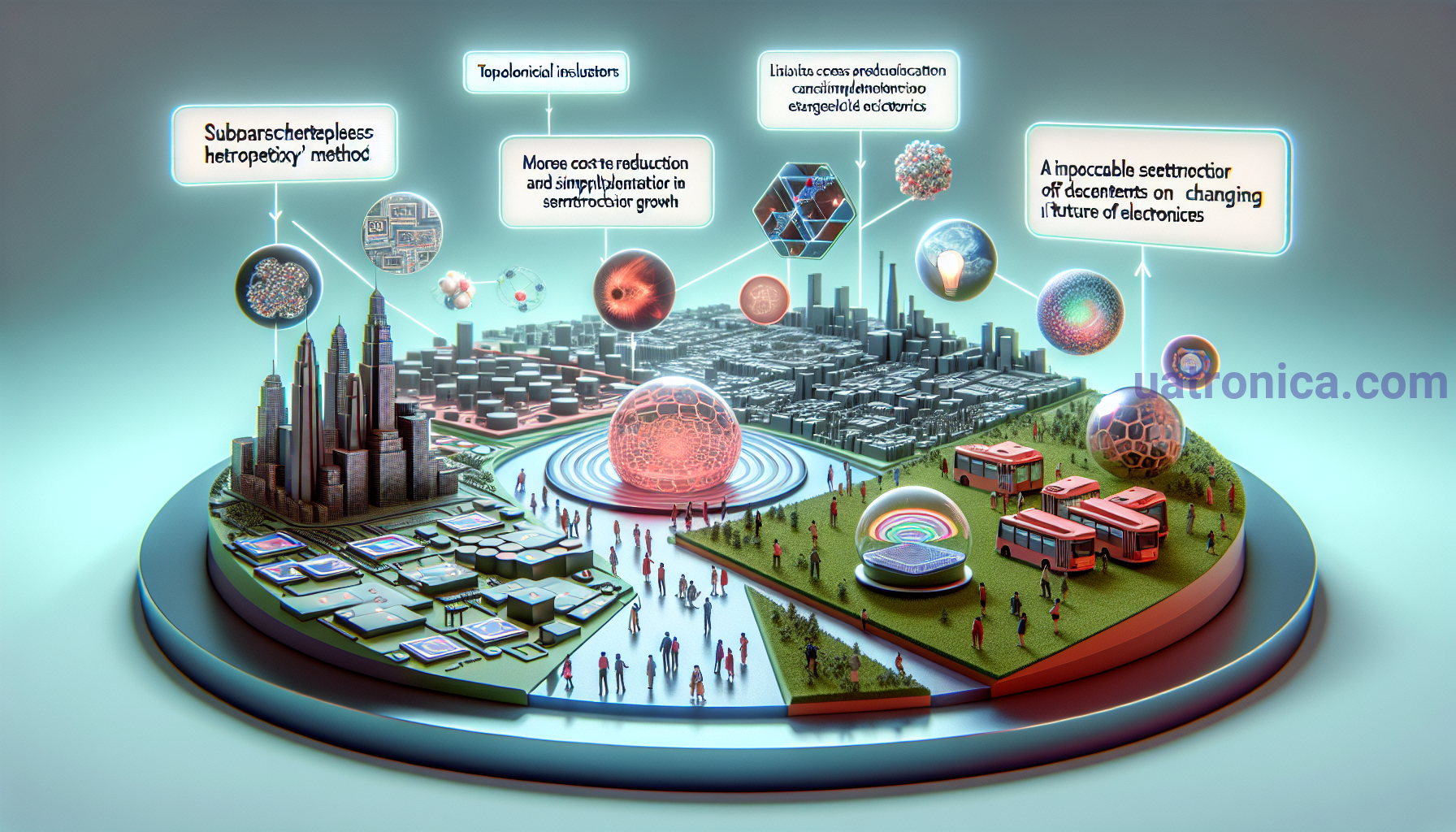5 amazing scientific discoveries in the world of semiconductors that will change the electronics of the future
Semiconductors are the basis for the development of modern electronics. They are used in a wide range of devices, from personal computers to mobile phones, and play an important role in the development of all areas of technology. Recent years have been very productive for scientific researchers in the field of semiconductors, and they have made many exciting discoveries that will soon change the electronics of the future. In this article, we will look at five of the most interesting scientific discoveries in the world of semiconductors.
1. Development of quantum computers
One of the most exciting areas of research in the world of semiconductors is the development of quantum computers. Quantum computers use the principles of quantum mechanics, which gives them the potential to process large amounts of data simultaneously and solve problems that even the most powerful classical computers can think of.
One of the main challenges in the development of quantum computers is the creation of semiconductor qubits - the main building blocks of a quantum computer. Qubits are the equivalent of classical bits, but they can exist in a superposition state, which is reflected in the properties of the qubit.
Many companies and universities are participating in the race to create quantum computers based on semiconductors. For example, IBM is working on the development of its quantum computer system, which uses semiconductor technology.
What this means for the future of electronics: Quantum computers have the potential to change the approach to computing and provide incredible possibilities in the field of data processing. They can significantly increase the speed of calculations and solving complex problems, which will expand the possibilities of electronic technology.
2. Growth of crystals in the usual way
Semiconductors are usually grown on substrates that have the same crystal structure as the semiconductor itself. However, scientists have discovered that it is possible to grow crystals in the usual way - without the use of substrates. This greatly simplifies the process of growing semiconductors and reduces the cost of production.
In general, the method is called "heteroepitaxy without a substrate" and is based on the use of thin crystalline layers deposited on incomplete atomic layers of the corresponding semiconductor. Thanks to this, it is possible to grow semiconductor crystals of various compositions without the need to use substrates with the appropriate crystal structure.

What this means for future electronics: The method of "substrate-free heteroepitaxy" can significantly reduce the cost of growing semiconductors and simplify the manufacturing process. This could lead to a reduction in the cost of electronics in general and provide greater access to the latest technology.
3. Use of topological insulators
Topological insulators are semiconductors that have a special property - they conduct current on the surface, but remain isolated inside. This gives them the potential to develop new electronic devices with reduced size and high speed.
One of the most interesting aspects of topological insulators is the presence of special points called topological defects. These defects have properties that are valid only for systems with a topological structure.
The scientist managed to use these topological defects to create a new type of transistors - topological transistors. These transistors open new possibilities for electronics and can be used in a wide range of devices, from superfast computers to quantum transistors.
What this means for future electronics: The use of topological insulators and topological transistors opens new avenues for the development of electronics with reduced size and high speed. This can lead to new devices and technologies with higher performance and reliability.
4. Use of new materials
Recent years have been rich in the discovery of new materials that can be used in semiconductor electronics. For example, 2D materials such as graphene have unique properties that can be used to create new devices and systems.
Graphene is a monoatomic layer of graphite that has high conductivity and exceptional mechanical and optical properties. This gives it potential for use in electronics, electrocatalysis, sensors, and other fields of technology.
Another interesting class of materials are perovskites - minerals that have an organic or inorganic structure and exhibit photovoltaic and photoluminescent properties. These materials, such as methylammonium perovskite, may find applications in solar cells and other devices that use solar energy.
What this means for future electronics: The use of new materials such as graphene and perovskites could lead to the development of new technologies and electronic devices with improved properties. This can lead to the creation of more efficient and stable electronics that will be used in various fields of technology.

5. Development of quantum point optics
Quantum dot optics is a new approach to describing the interaction of light with semiconductors based on quantum dots. Quantum dots are semiconductor nanoparticles that have quantum properties.
The use of quantum dots in optics opens up new possibilities for storing information and transmitting signals. Quantum dots can be used to create miniature lasers, LEDs and other optical devices.
Scientists are also studying the possibilities of using quantum dots in quantum information and quantum computers. These dots can be used to store and process quantum information, which opens new avenues for the development of quantum technologies.
What this means for future electronics: The development of quantum dot optics could lead to a new generation of optical devices and provide new possibilities for storing and transmitting information. This could lead to more efficient and faster devices that will revolutionize the electronics industry.
In this article, we looked at five amazing scientific discoveries in the world of semiconductors that will change the electronics of the future. These discoveries will expand the possibilities of technology and accelerate the development of scientific fields. Ensuring the effective interaction of light and electronics opens up new horizons for the development of electronics as a whole.
Link: https://uk.wikipedia.org/wiki/Semiconductors










